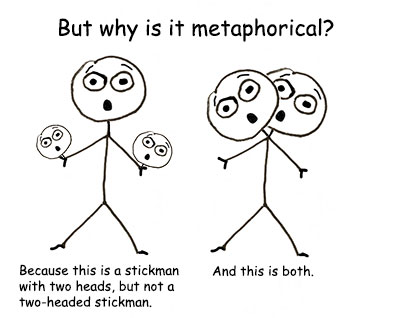
In my previous post on figurative language, I described simile, lexical metaphor, analogy, hyperbole, personification, and synecdoche and their use in academic and creative writing. Figurative language is conveying ideas artfully using words in nonliteral (according to their definition) ways. As I was reading up on figurative language, I came across something called grammatical metaphor, which was first named in 1985 by linguist Michael Halliday in his book Functional Grammar.
Get a free sample proofread and edit for your English document.
Two professional proofreaders will proofread and edit your English document.
Grammatical metaphor is not figurative language as defined above. According to Macmillan Dictionary grammatical metaphor is when “concepts that are usually expressed in one grammatical form are expressed in another, mainly by using a noun to express a concept normally expressed by a verb.” This might sound like a bunch of grammatical mumbo-jumbo (good stuff!), but as you read on and better understand grammatical metaphor through some examples, you will see its usefulness in all types of writing, particularly academic writing, and when it should be avoided.
Transforming the parts of speech (e.g., nouns, verbs) in a sentence can be done various ways, but substituting nouns for related verbs or adjectives, or nominalization, is most common. Examples of nominalization include turning “express” into “expression,” “argue” into “argument,” and “debate” (verb) into “debate” (noun).
The change from a verb to a noun within a sentence carries with it other changes as well. For example, “I express my ideas in detail to effectively clarify the point,” becomes, “Detailed expression effectively clarifies the point.” Let’s look at another example of grammatical metaphor. The sentence:
can be rewritten as:
In this example, a somewhat lengthy clause (“When not one but two proofreaders thoroughly review and edit documents”) is turned into a short noun phrase (“a two-proofreader model”) that becomes the subject of a single-clause sentence. The subject of the original first clause (“not one but two proofreaders”) and the original verb phrase (“thoroughly review”) all melt into a new subject (“a two-proofreader model”), which combines with the verb “improves” into a much more concise version of the sentence.

Grammatical metaphor may seem complex, but it is actually something we use rather automatically and frequently in speaking and writing. Becoming aware and intentional about using it, however, can improve our writing in several ways.
Grammatical metaphor has its potential pitfalls as well:
As you write your next paper or report, keep in mind the concept of grammatical metaphor and the way in which it allows you to transform sentences. Used well, grammatical metaphor can definitely add to your writing at times and provide you with alternative wordings to best express your ideas.
Sarah P.
Get a free sample proofread and edit for your English document.
Two professional proofreaders will proofread and edit your English document.
Get a free sample proofread and edit for your document.
Two professional proofreaders will proofread and edit your document.
We will get your free sample back in three to six hours!